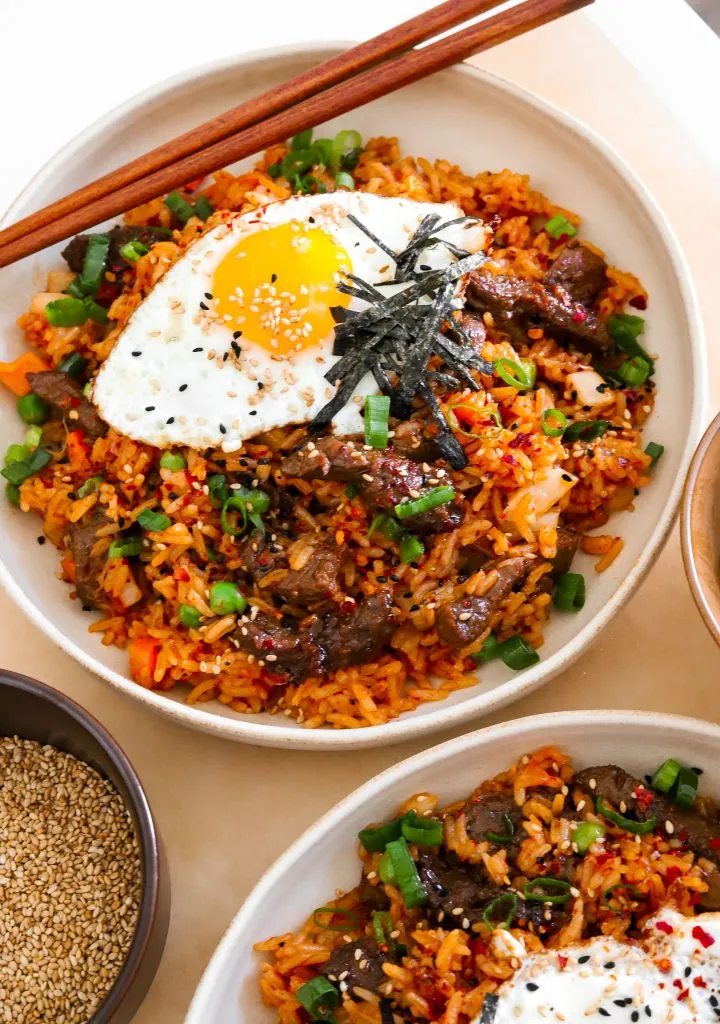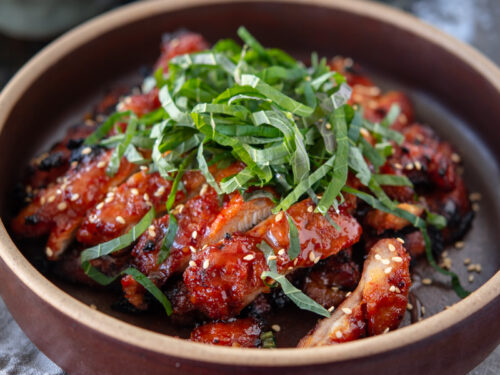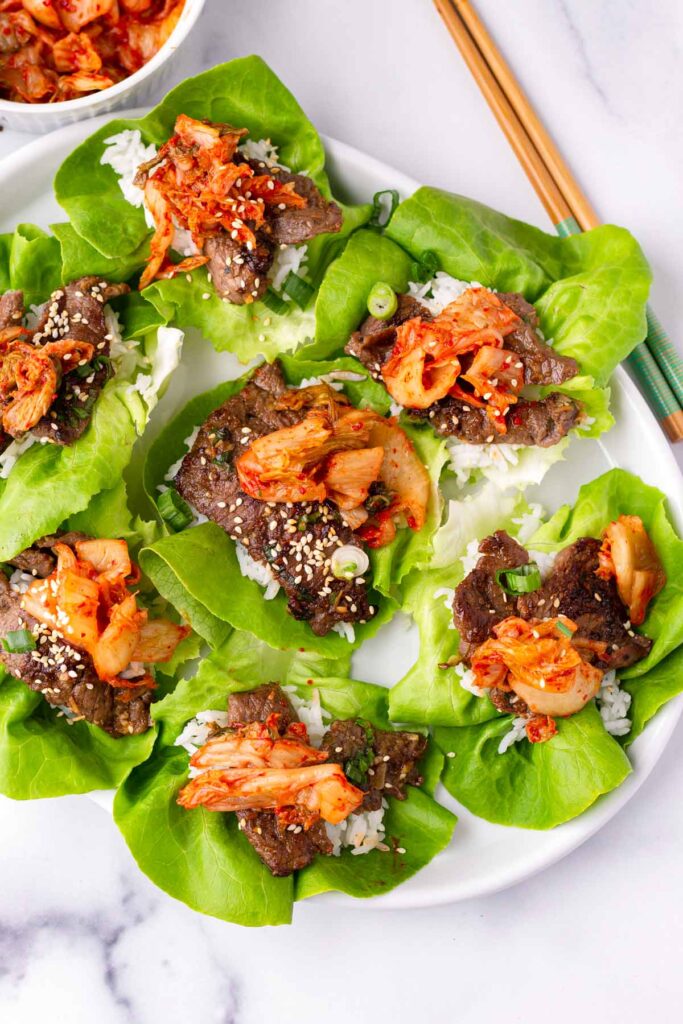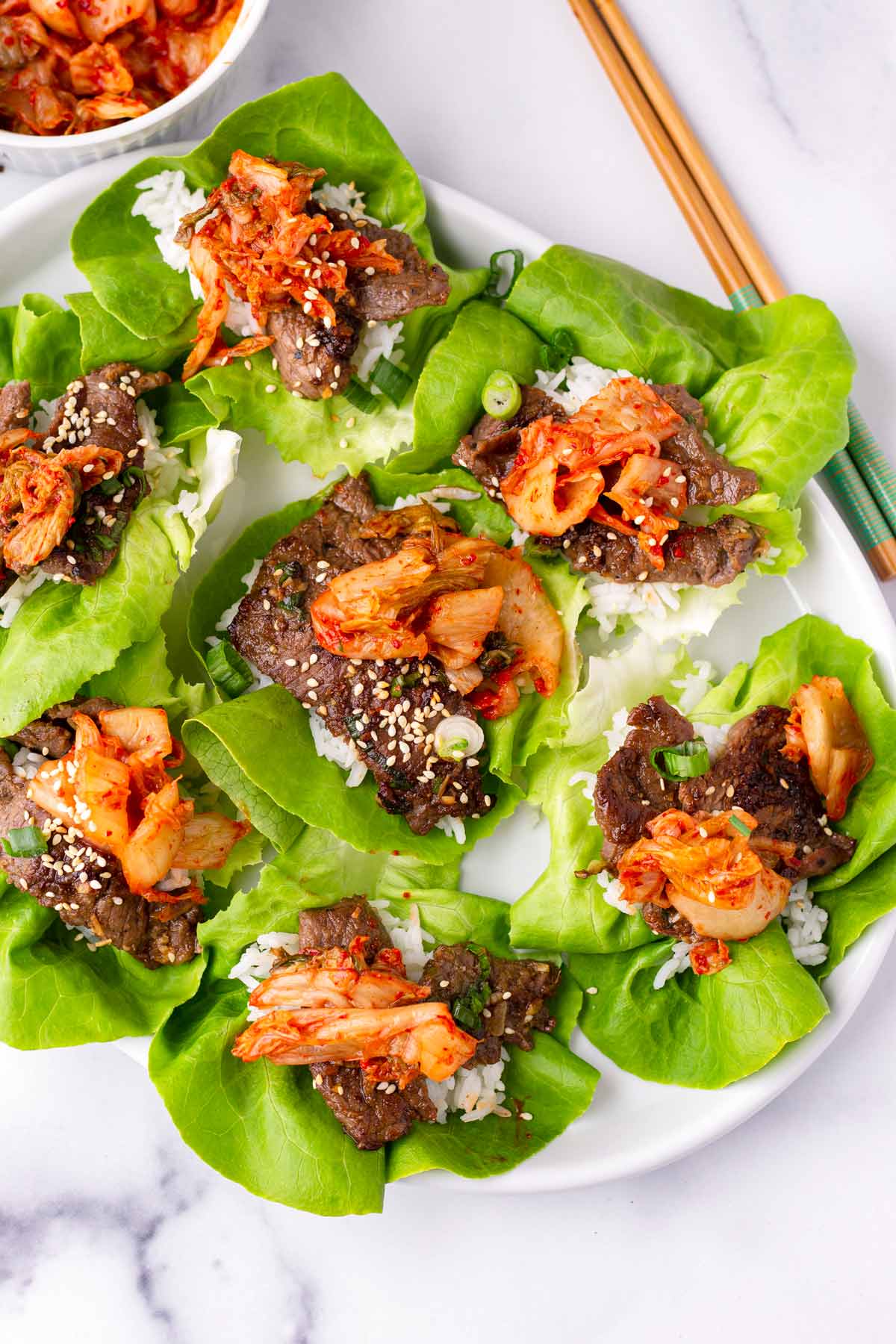Korean cuisine is a vibrant celebration of bold flavors, vibrant colors, and cultural heritage. From the fiery kick of kimchi to the savory-sweet allure of bulgogi, Korean dishes have captured the hearts (and taste buds) of food lovers worldwide. At https://tastetrove.net/ we’re passionate about bringing global cuisines to your kitchen, and today, we’re diving into the world of Korean cooking with quick, delicious recipes you can whip up in 30 minutes or less. Whether you’re a seasoned home cook or a beginner, these recipes are designed to be approachable, flavorful, and perfect for busy weeknights. Let’s explore some iconic Korean dishes, including kimchi, bulgogi, bibimbap, and more, with tips to make them fast and easy.
Why Korean Cuisine?
Korean food is a perfect balance of spicy, sweet, sour, and umami flavors, often paired with fresh vegetables, fermented ingredients, and tender proteins. It’s not just about taste—Korean cuisine is deeply rooted in tradition, with dishes like kimchi reflecting centuries-old preservation techniques. According to The Korea Society, Korean meals emphasize balance, often featuring banchan (side dishes) alongside a main dish to create a harmonious dining experience.
For those short on time, Korean recipes can be adapted to fit a busy schedule without sacrificing authenticity. With pantry staples like gochujang (Korean red pepper paste), sesame oil, and soy sauce, you can create restaurant-quality dishes at home. Below, we’ll walk you through five quick Korean recipes, including tips for preparation, ingredient substitutions, and links to additional resources on TasteTrove and beyond.
Korean Recipes are a vibrant showcase of Korea’s rich culinary heritage, blending bold flavors and fresh ingredients. Korean Recipes often feature staples like rice, kimchi, and gochujang, creating dishes that are both spicy and savory. From the sizzling Korean Recipes like Bulgogi to the comforting Korean Recipes like Bibimbap, each dish tells a story of tradition and innovation. Korean Recipes emphasize balance, combining textures and tastes for a harmonious dining experience. Exploring Korean Recipes offers a delicious journey into a culture that celebrates food with passion.
Recipe 1: Quick Homemade Kimchi
Kimchi, Korea’s iconic fermented cabbage dish, is a staple in every Korean household. While traditional kimchi can take days to ferment, this quick version is ready to eat in just 30 minutes, with a flavor that’s tangy, spicy, and addictive.
Ingredients (Serves 4)
- 1 small head of Napa cabbage (about 1 lb), chopped into bite-sized pieces
- 2 tbsp kosher salt
- 1/4 cup gochugaru (Korean red pepper flakes, available at Amazon)
- 2 tbsp fish sauce (or soy sauce for a vegan option)
- 1 tbsp minced garlic
- 1 tsp grated ginger
- 1 tbsp sugar
- 2 green onions, sliced
- 1 small carrot, julienned
- 1/4 cup water
Instructions
- Prepare the Cabbage: Place chopped Napa cabbage in a large bowl, sprinkle with salt, and massage gently for 2–3 minutes until it softens. Let sit for 10 minutes, then rinse thoroughly and drain.
- Make the Seasoning Paste: In a small bowl, mix gochugaru, fish sauce, garlic, ginger, sugar, and water to form a paste.
- Combine: Add the drained cabbage, green onions, and carrots to the paste. Toss to coat evenly, using gloves to avoid staining your hands.
- Serve or Store: Serve immediately as a fresh kimchi salad or pack into a jar and let it sit for a few hours for a lightly fermented flavor. Store in the fridge for up to a week.
Time-Saving Tip
Pre-chopped cabbage or a food processor for slicing carrots can cut prep time to under 10 minutes. For a deeper dive into kimchi variations, check out our Ultimate Guide to Fermented Foods on TasteTrove.
Why It Works
This quick kimchi skips the long fermentation process but retains the bold flavors of traditional kimchi. It’s perfect as a side dish or topping for rice bowls. For more on kimchi’s health benefits, visit Healthline.

Recipe 2: 15-Minute Bulgogi (Korean BBQ Beef)
Bulgogi, meaning “fire meat,” is a beloved Korean dish featuring thinly sliced beef marinated in a sweet-savory sauce. This version uses quick-cooking techniques to deliver juicy, caramelized beef in just 15 minutes.
Ingredients (Serves 2–3)
- 1 lb beef sirloin or ribeye, thinly sliced (partially freeze for easier slicing)
- 3 tbsp soy sauce
- 2 tbsp brown sugar
- 1 tbsp sesame oil
- 1 tbsp minced garlic
- 1 tsp grated ginger
- 1/2 pear, grated (or 1 tbsp apple juice for sweetness)
- 2 green onions, sliced
- 1 tbsp vegetable oil
- Sesame seeds for garnish
Instructions
- Marinate the Beef: In a bowl, combine soy sauce, brown sugar, sesame oil, garlic, ginger, and grated pear. Add the beef slices and toss to coat. Let sit for 5 minutes (or while you prep other ingredients).
- Cook: Heat vegetable oil in a large skillet or wok over high heat. Add the beef in a single layer and cook for 2–3 minutes per side until caramelized and cooked through.
- Garnish and Serve: Sprinkle with green onions and sesame seeds. Serve with steamed rice or lettuce wraps for a low-carb option.
Time-Saving Tip
Buy pre-sliced beef from an Asian grocery store or ask your butcher to slice it thinly. For more Korean BBQ inspiration, explore our Guide to Asian Grilling.
Why It Works
The pear in the marinade tenderizes the beef quickly, ensuring a melt-in-your-mouth texture. This dish pairs perfectly with our Quick Korean Banchan Recipes for a complete meal.
Recipe 3: Easy Bibimbap Bowl
Bibimbap, a colorful rice bowl topped with assorted vegetables, protein, and a spicy sauce, is a Korean classic. This simplified version comes together in 20 minutes, perfect for a wholesome dinner.
Ingredients (Serves 2)
- 2 cups cooked white rice (use leftover rice or a rice cooker)
- 1/2 lb ground beef or tofu
- 2 tbsp soy sauce
- 1 tbsp gochujang
- 1 tbsp sesame oil
- 1 cup spinach, blanched
- 1 carrot, julienned
- 1 small zucchini, julienned
- 1/2 cup bean sprouts, blanched
- 2 eggs, fried (optional)
- 1 tbsp sesame seeds
- Kimchi (from Recipe 1) for serving
Instructions
- Cook the Protein: In a skillet, cook ground beef or tofu with soy sauce over medium heat for 5–7 minutes until browned. Set aside.
- Sauté Vegetables: In the same skillet, add sesame oil and quickly sauté carrots, zucchini, and bean sprouts separately (1–2 minutes each). Season lightly with salt.
- Assemble: Divide rice between two bowls. Arrange beef/tofu, spinach, carrots, zucchini, bean sprouts, and kimchi in sections over the rice. Top with a fried egg if desired.
- Add Sauce: Mix gochujang with a splash of water and drizzle over the bowl. Sprinkle with sesame seeds and serve.
Time-Saving Tip
Use pre-washed spinach and pre-cut vegetables to save prep time. For more bowl meal ideas, check out our Healthy Bowl Recipes.
Why It Works
Bibimbap’s mix-and-match nature makes it versatile and visually appealing. The gochujang sauce adds a spicy kick that ties everything together. Learn more about gochujang at Serious Eats.
Recipe 4: Spicy Korean Tteokbokki (Rice Cakes)
Tteokbokki, cylindrical rice cakes (tteok) in a spicy red sauce, is a popular Korean street food. This version is ready in 20 minutes and delivers bold, comforting flavors.
Ingredients (Serves 2–3)
- 1 lb cylindrical rice cakes (tteok, available at Asian markets or HMart)
- 2 cups water
- 1 tbsp gochujang
- 1 tbsp gochugaru
- 1 tbsp soy sauce
- 1 tsp sugar
- 1 tsp minced garlic
- 1/2 cup fish cakes, sliced (optional)
- 1 green onion, chopped
- Sesame seeds for garnish
Instructions
- Prep the Tteok: If using frozen rice cakes, soak in warm water for 10 minutes, then drain.
- Make the Sauce: In a large pan, combine water, gochujang, gochugaru, soy sauce, sugar, and garlic. Bring to a simmer over medium heat.
- Cook: Add rice cakes and fish cakes (if using). Stir occasionally and cook for 8–10 minutes until the sauce thickens and coats the tteok.
- Serve: Garnish with green onions and sesame seeds. Serve hot.
Time-Saving Tip
Use pre-sliced fish cakes and store-bought tteok to save time. For more Korean street food recipes, visit our Street Food Favorites.
Why It Works
The chewy texture of tteok paired with the spicy, slightly sweet sauce makes this dish irresistible. It’s a great vegetarian option if you skip the fish cakes.
Recipe 5: Korean Cucumber Salad (Oi Muchim)
This refreshing cucumber salad is a perfect banchan (side dish) to balance heavier dishes like bulgogi or tteokbokki. It’s ready in just 10 minutes.
Ingredients (Serves 4 as a side)
- 2 Persian cucumbers, thinly sliced
- 1 tsp kosher salt
- 1 tbsp gochugaru
- 1 tbsp rice vinegar
- 1 tsp sesame oil
- 1 tsp sugar
- 1 tsp minced garlic
- 1 green onion, chopped
- 1 tsp toasted sesame seeds
Instructions
- Salt the Cucumbers: Toss cucumber slices with salt and let sit for 5 minutes. Squeeze out excess water.
- Mix the Dressing: In a bowl, combine gochugaru, rice vinegar, sesame oil, sugar, and garlic.
- Toss and Serve: Add cucumbers and green onions to the dressing, toss to coat, and sprinkle with sesame seeds. Serve immediately.
Time-Saving Tip
Use a mandoline for ultra-thin cucumber slices in seconds. Pair this with our Korean Banchan Recipes for more side dish ideas.
Why It Works
This salad’s crisp texture and spicy-tangy dressing make it a perfect complement to any Korean meal. It’s also low-calorie and refreshing.
Korean Recipes are a vibrant showcase of Korea’s rich culinary heritage, blending bold flavors and fresh ingredients. Korean Recipes often feature staples like rice, kimchi, and gochujang, creating dishes that are both spicy and savory. From the sizzling Korean Recipes like Bulgogi to the comforting Korean Recipes like Bibimbap, each dish tells a story of tradition and innovation. Korean Recipes emphasize balance, combining textures and tastes for a harmonious dining experience. Exploring Korean Recipes offers a delicious journey into a culture that celebrates food with passion.
Tips for Success with Korean Cooking
- Stock Your Pantry: Keep gochujang, gochugaru, sesame oil, and soy sauce on hand. These staples are versatile and last for months. Check out Maangchi for more on Korean pantry essentials.
- Balance Flavors: Korean cuisine thrives on balance—pair spicy dishes with cooling sides like cucumber salad or rice.
- Prep Ahead: Chop vegetables or marinate proteins in advance to make weeknight cooking even faster.
- Experiment: Don’t be afraid to tweak recipes. Swap beef for chicken in bulgogi or use zucchini instead of carrots in bibimbap.
For more tips on mastering global cuisines, visit our Cooking Tips Hub.
Why These Recipes Work for Busy Cooks
These recipes are designed with speed and simplicity in mind, without compromising on flavor. By using quick-cooking proteins, pre-prepped ingredients, and versatile sauces, you can create authentic Korean dishes in 30 minutes or less. Whether you’re craving the heat of tteokbokki or the savory goodness of bulgogi, these recipes bring Korea’s culinary magic to your table.
At TasteTrove, we believe cooking should be fun, approachable, and delicious. Try these recipes and share your creations with us on X. For more Korean inspiration, explore our Asian Cuisine Collection or dive into the world of Korean cooking with resources like Korean Bapsang.
Happy cooking, and enjoy your Korean feast!

Korean Recipes FAQs and Recommended Products
Korean cuisine is celebrated for its bold flavors, vibrant presentation, and cultural significance. Whether you’re new to Korean cooking or a seasoned home chef, you may have questions about ingredients, techniques, and essential tools. Below, we’ve compiled frequently asked questions (FAQs) about Korean recipes, paired with recommended products to help you create authentic dishes at home. This guide complements our article, Delicious Korean Recipes: From Kimchi to Bulgogi in 30 Minutes, available on TasteTrove.
Frequently Asked Questions About Korean Recipes
1. What are the essential ingredients for Korean cooking?
Korean cuisine relies on a few key pantry staples to achieve its signature flavors:
- Gochujang (Korean Red Pepper Paste): A fermented paste that adds heat, sweetness, and umami to dishes like bibimbap and tteokbokki.
- Gochugaru (Korean Red Pepper Flakes): Used in kimchi and spicy stews for vibrant color and heat.
- Sesame Oil: Adds a nutty aroma to marinades, stir-fries, and banchan (side dishes).
- Soy Sauce: Provides savory depth; opt for Korean or gluten-free versions if needed.
- Rice Vinegar: Used in salads and marinades for a tangy kick.
- Garlic and Ginger: Fresh aromatics that form the backbone of many recipes.
For a detailed guide, check out our Korean Pantry Essentials.
2. Can I make Korean recipes vegan or vegetarian?
Yes, many Korean dishes are naturally vegan or easily adaptable. For example:
- Swap fish sauce for soy sauce in kimchi (try our Quick Homemade Kimchi recipe).
- Use tofu or mushrooms instead of meat in bibimbap or bulgogi. Our Vegan Korean Recipes offers more ideas.
- Dishes like cucumber salad (oi muchim) and japchae (glass noodle stir-fry) are often vegan-friendly with minor tweaks, such as using gluten-free soy sauce.
3. How can I make Korean recipes quickly?
To save time:
- Use pre-sliced meats or tofu to reduce prep time for bulgogi or bibimbap.
- Buy pre-washed vegetables or use a mandoline for quick slicing.
- Opt for store-bought kimchi or fish cakes for dishes like tteokbokki.
- Prepare sauces or marinades in advance and store them in the fridge.
Our 30-Minute Korean Recipes article includes time-saving tips for dishes like bulgogi and tteokbokki.
4. Where can I find authentic Korean ingredients?
Korean ingredients are increasingly available at mainstream grocery stores, but for the best quality:
- Asian Grocery Stores: HMart or local Korean markets offer fresh tteok, gochujang, and banchan ingredients.
- Online Retailers: Websites like HMart or Kevin’s Choice provide high-quality gochujang, sesame oil, and more.
- Trader Joe’s: Offers some Korean-inspired products, like gochujang, though quality varies. Check Food & Wine’s guide for recommendations.
5. Is kimchi difficult to make at home?
Not at all! While traditional kimchi requires days of fermentation, a quick version can be made in 30 minutes. The key is salting the cabbage to soften it and using a simple paste of gochugaru, garlic, and fish sauce (or soy sauce for vegan). See our Quick Homemade Kimchi recipe for a beginner-friendly approach. For a detailed recipe, try But First We Brunch’s Mom’s Kimchi.
6. What’s the difference between gochujang and gochugaru?
- Gochujang: A fermented paste made from red chili peppers, glutinous rice, and soybeans. It’s thick, sweet, and spicy, ideal for sauces and marinades.
- Gochugaru: Dried red pepper flakes used for heat and color in kimchi and stews. It’s not fermented and has a brighter, less complex flavor.
Both are essential for authentic Korean cooking. Learn more at Kimchimari’s Ingredient Guide.
7. Can I substitute ingredients in Korean recipes?
Yes, with some care:
- Gochujang: Sriracha or a mix of red chili paste and honey can work in a pinch, but the flavor won’t be as complex.
- Gochugaru: Crushed red pepper flakes can substitute, but use sparingly as they’re hotter.
- Fish Sauce: Soy sauce or vegan fish sauce works for vegetarian/vegan recipes.
- Asian Pear (in bulgogi): Apple juice or kiwi can tenderize meat similarly.
For more substitution tips, visit Maangchi’s Korean Cooking Guide.
8. What equipment do I need for Korean cooking?
Basic kitchen tools suffice, but these enhance authenticity:
- Nonstick Skillet or Wok: For stir-frying japchae or searing bulgogi.
- Mandoline: For thinly slicing vegetables for banchan or bibimbap.
- Rice Cooker: For perfectly cooked rice, a staple in Korean meals.
- Earthenware Pot (Ttukbaegi): Ideal for stews like kimchi jjigae or doenjang jjigae.
Recommended Products for Korean Cooking
To bring authentic Korean flavors to your kitchen, here are top-rated products available online or at specialty stores. These are curated based on quality, authenticity, and user reviews.
1. Gochujang (Korean Red Pepper Paste)
- Product: Sempio Gochujang
- Why: Made with premium Korean red pepper flakes, it’s heritage-certified and free of additives, offering authentic heat and sweetness.
- Use: Perfect for tteokbokki, bibimbap sauce, or bulgogi marinade.
- Where to Buy: Amazon or HMart.
- Price: ~$8–12 for 500g.
2. Gochugaru (Korean Red Pepper Flakes)
- Product: Taekyung Coarse Gochugaru
- Why: Sun-dried in Korea for vibrant color and balanced heat, ideal for kimchi and stews.
- Use: Essential for quick kimchi (see our recipe) and spicy banchan.
- Where to Buy: Kevin’s Choice or Amazon.
- Price: ~$10–15 for 1 lb.
3. Sesame Oil
- Product: Kevin’s Choice Premium Sesame Oil
- Why: Low-temperature roasted for a pure, nutty flavor without harmful additives like benzopyrene.
- Use: Drizzle over bibimbap, use in marinades, or toss with cucumber salad.
- Where to Buy: Kevin’s Choice or HMart.
- Price: ~$12–18 for 16 oz.
4. Korean Soy Sauce
- Product: Sempio Jin Gold Soy Sauce
- Why: Naturally brewed for deep umami, perfect for Korean recipes requiring soy sauce.
- Use: Ideal for bulgogi marinade or braised dishes like lotus root jorim.
- Where to Buy: Amazon or Asian grocery stores.
- Price: ~$6–10 for 850ml.
5. Cylindrical Rice Cakes (Tteok)
- Product: HMart Fresh Tteok
- Why: Freshly made tteok offers the chewy texture essential for tteokbokki.
- Use: Use in our Spicy Korean Tteokbokki recipe.
- Where to Buy: HMart or local Korean markets.
- Price: ~$5–8 for 1 lb.
6. Rice Cooker
- Product: Cuckoo 6-Cup Micom Rice Cooker
- Why: Reliable for perfectly cooked short-grain rice, a staple for bibimbap and other Korean meals.
- Use: Ensures fluffy rice for bowls or kimbap.
- Where to Buy: Amazon or HMart.
- Price: ~$80–120.
7. Mandoline Slicer
- Product: OXO Good Grips Handheld Mandoline
- Why: Adjustable settings for thin, uniform vegetable slices, saving prep time for banchan.
- Use: Slice cucumbers for oi muchim or carrots for bibimbap.
- Where to Buy: Amazon.
- Price: ~$20–30.
8. Earthenware Pot (Ttukbaegi)
- Product: Crazy Korean Cooking Ttukbaegi
- Why: Retains heat for simmering stews like doenjang jjigae or kimchi jjigae, enhancing flavor.
- Use: Cook authentic Korean stews or serve sizzling hot dishes.
- Where to Buy: Amazon or HMart.
- Price: ~$15–25.

Tips for Using These Products
- Storage: Store gochujang and gochugaru in airtight containers in the fridge to maintain freshness. Sesame oil is best kept in a cool, dark place.
- Quality Check: Opt for Korean-made products for authenticity, as some mass-produced versions use additives that dilute flavor.
- Experimentation: Start with small quantities of gochujang or gochugaru to adjust spice levels to your taste.
For more Korean cooking inspiration, explore My Korean Kitchen or Beyond Kimchee for recipes and tutorials. Share your creations with us on X and join the TasteTrove community
